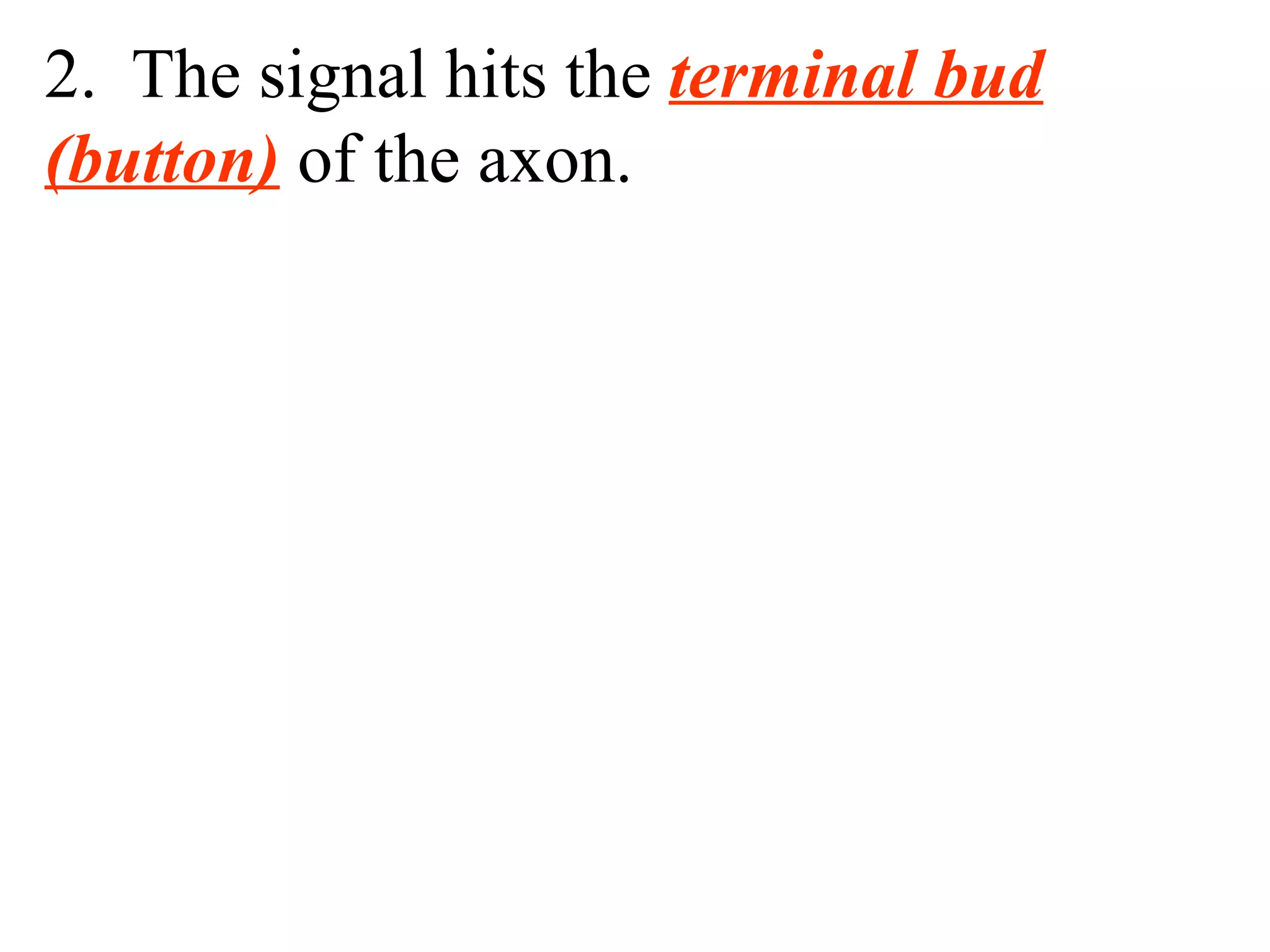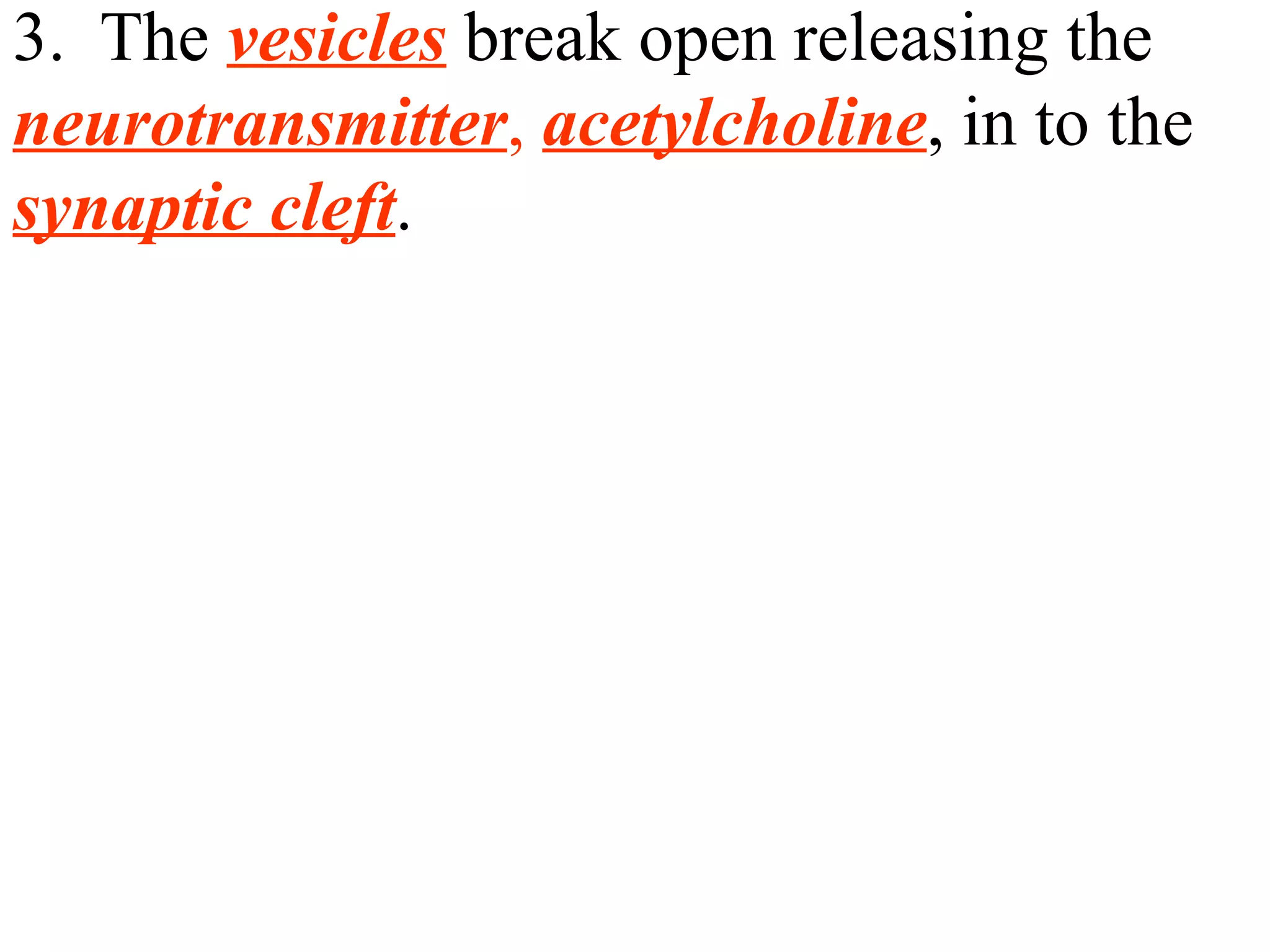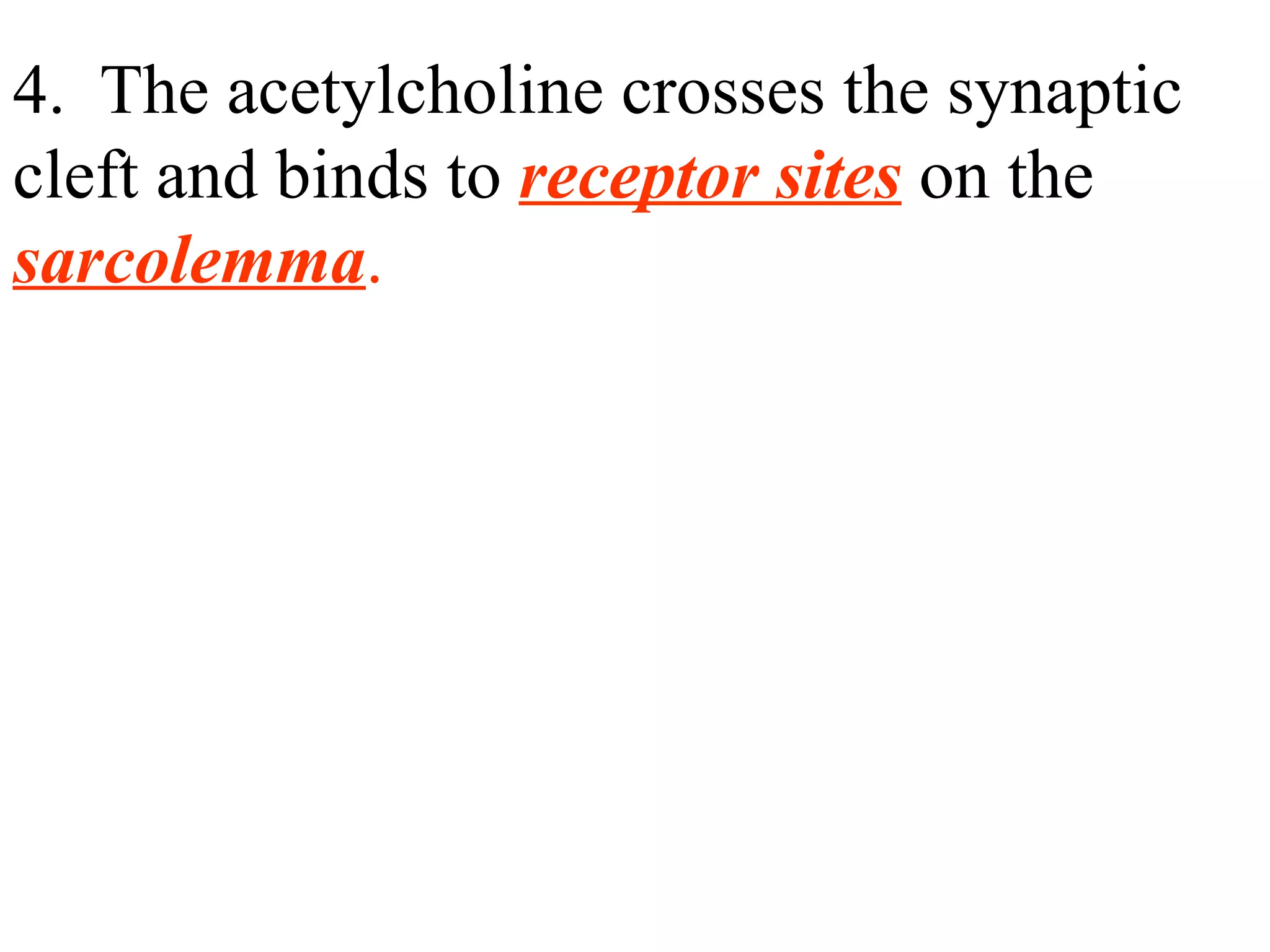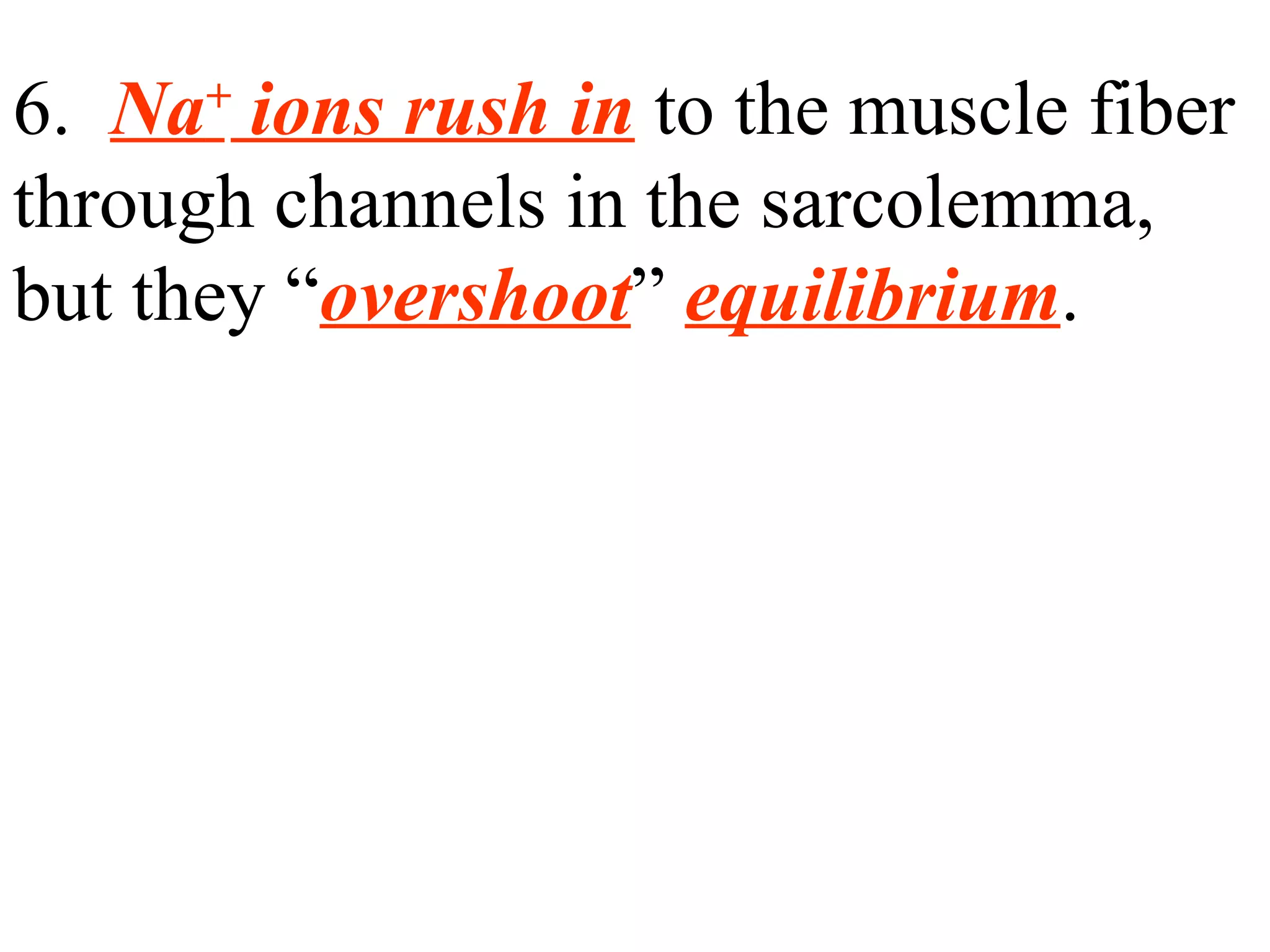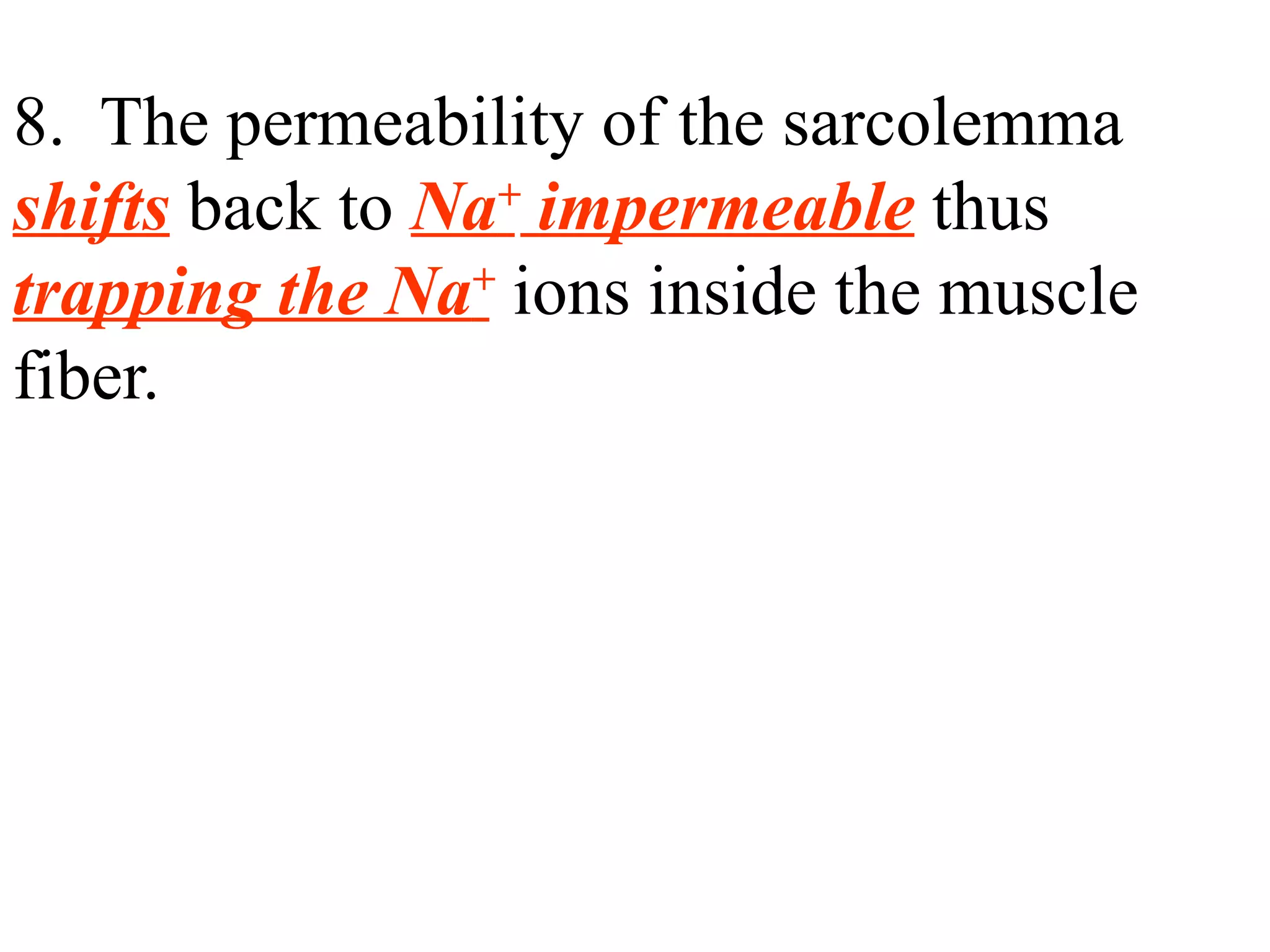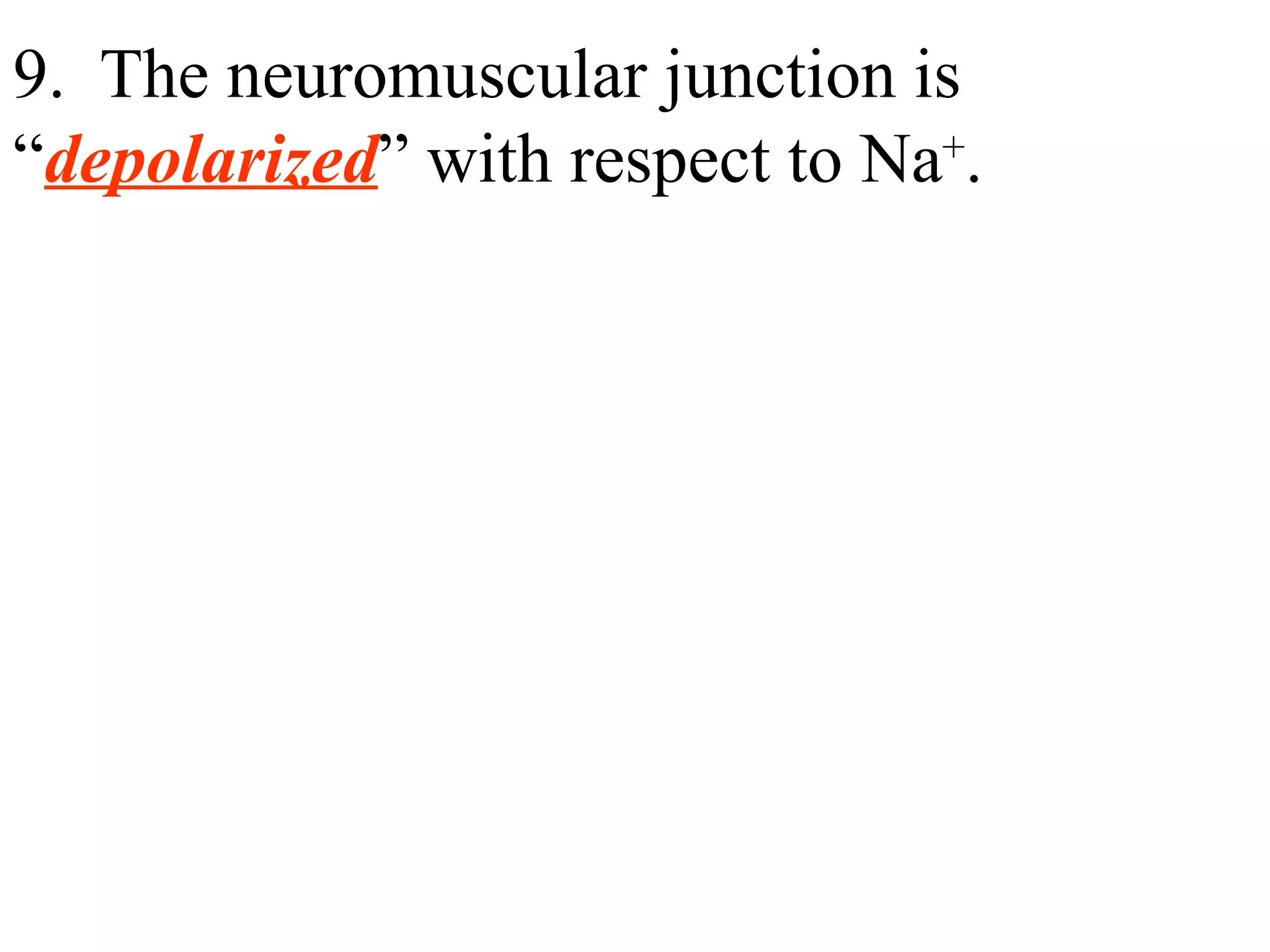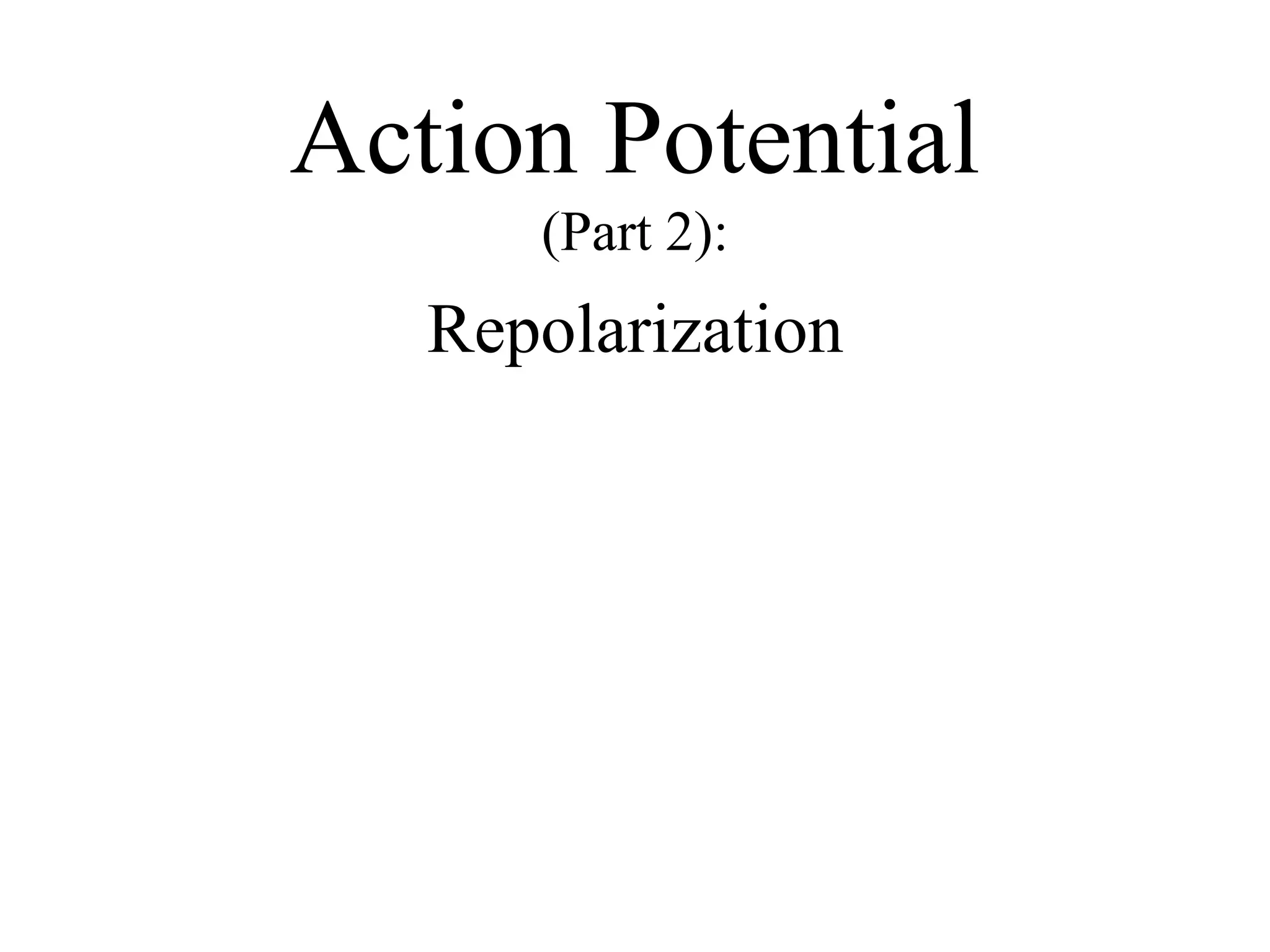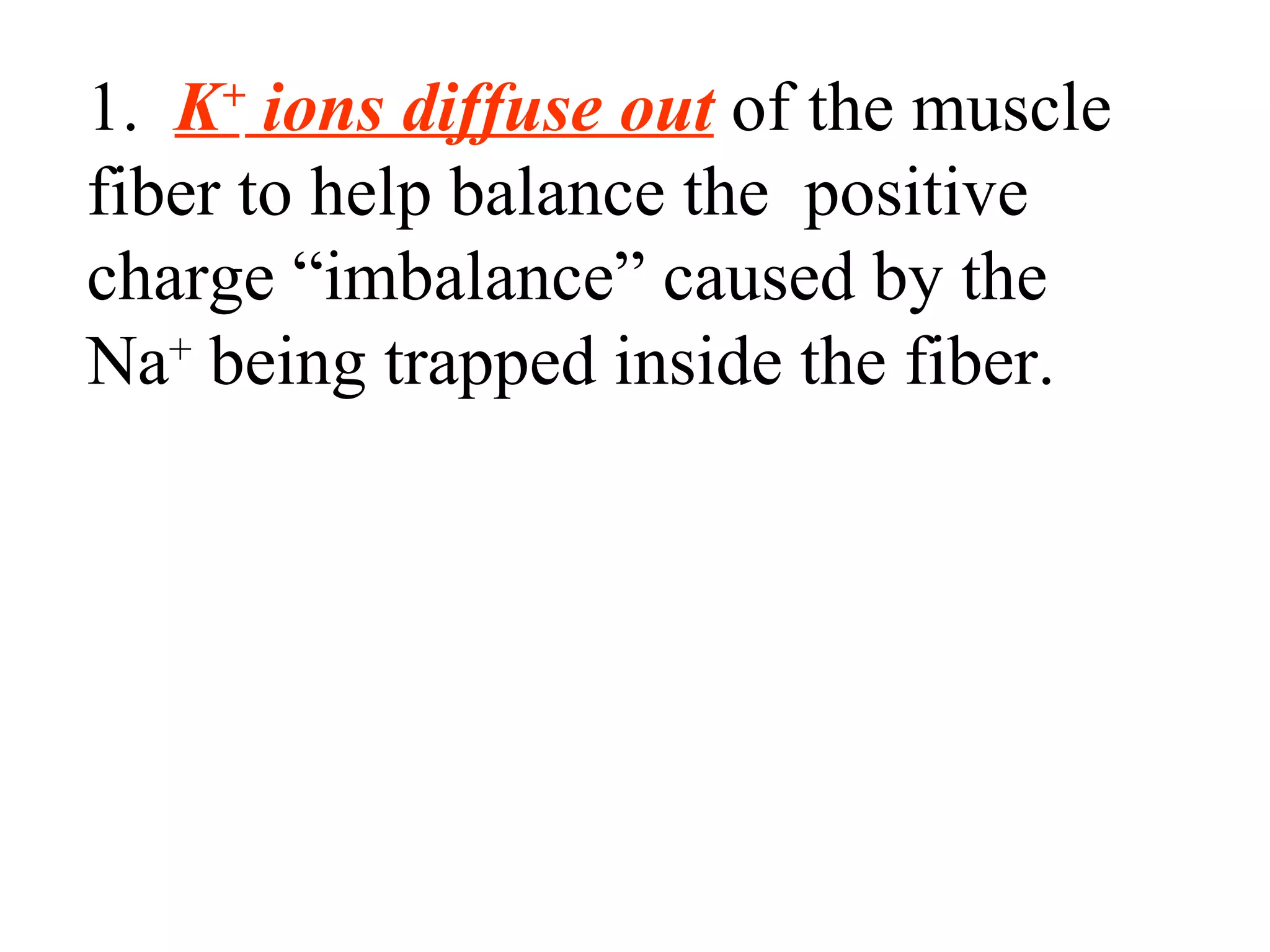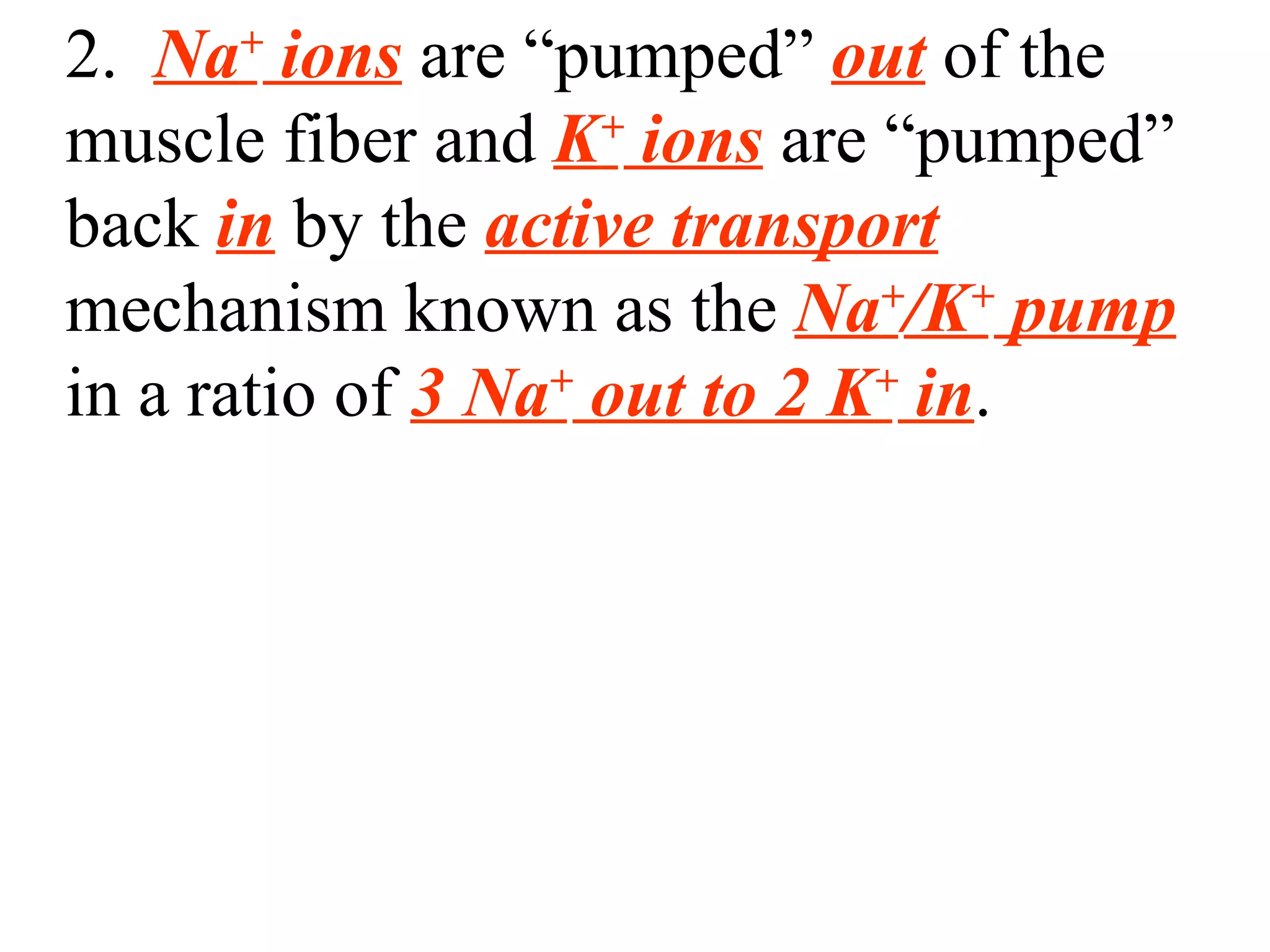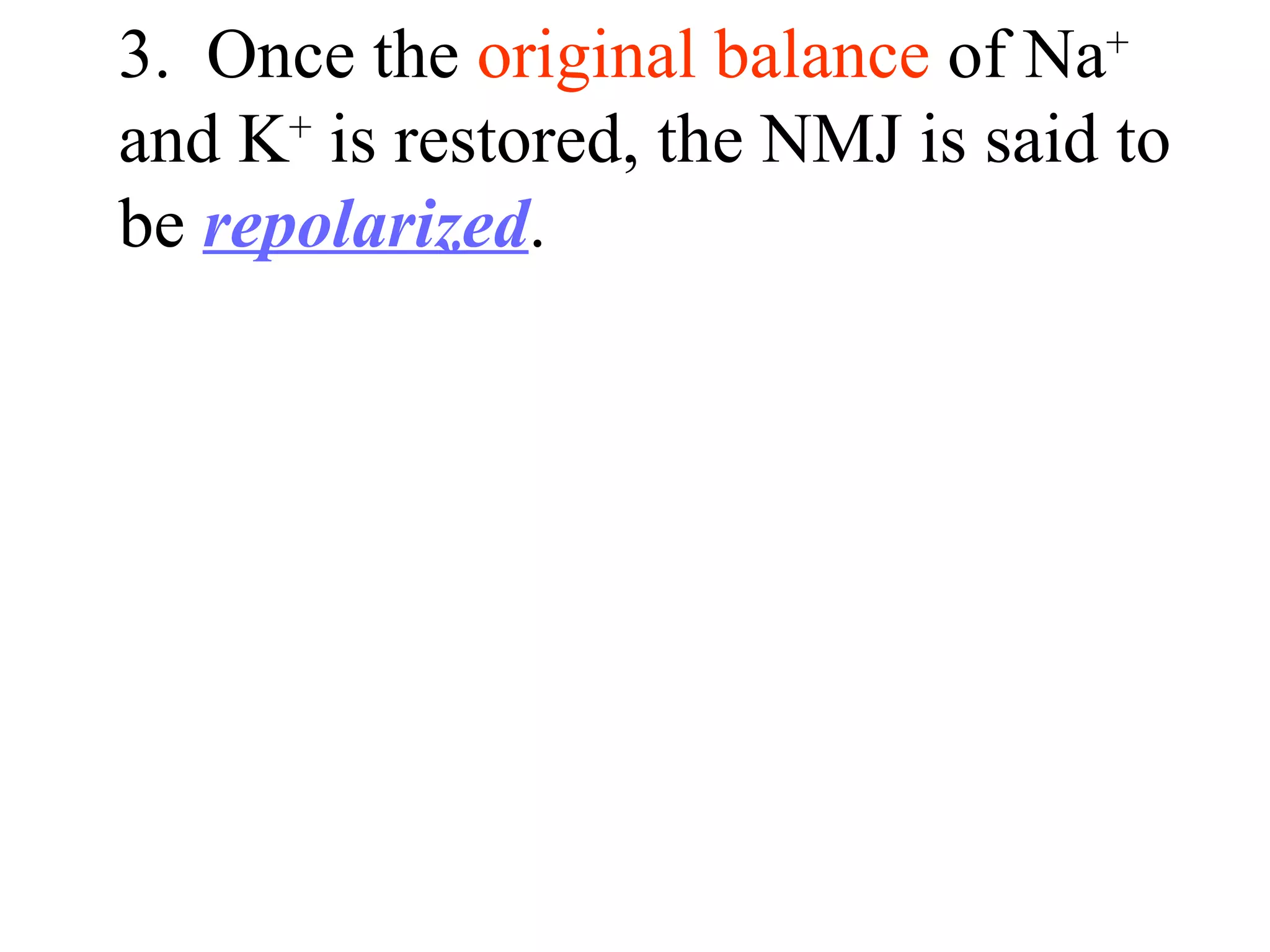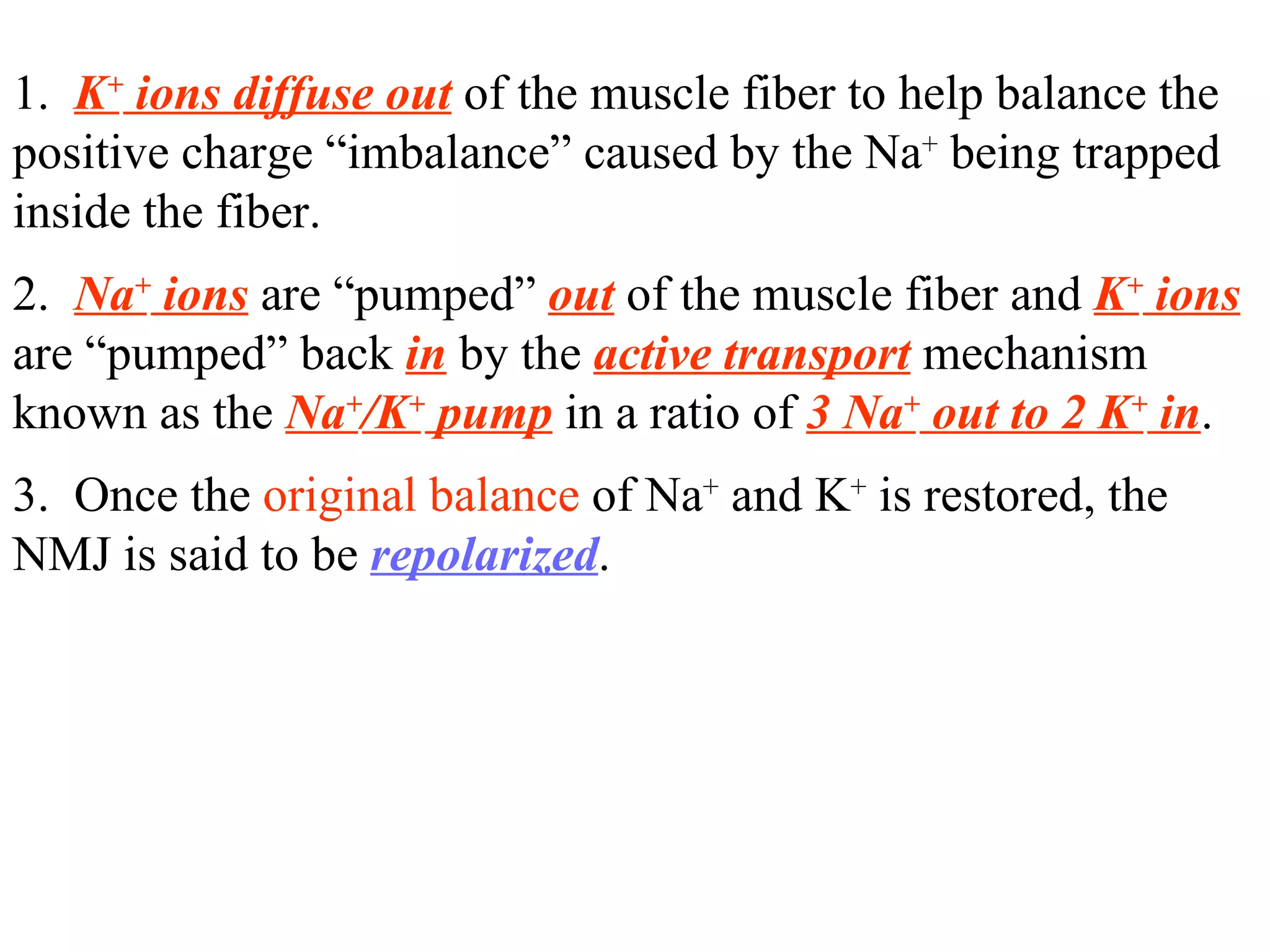The document describes the process of muscle contraction initiated by a motor neuron signal. It explains that the signal causes vesicles to release acetylcholine into the synaptic cleft. The acetylcholine binds to receptors on the muscle fiber, changing the fiber's permeability to sodium ions. Sodium ions then rush into the fiber, depolarizing it. The fiber then repolarizes as potassium ions diffuse out and the sodium-potassium pump restores ion balances.

